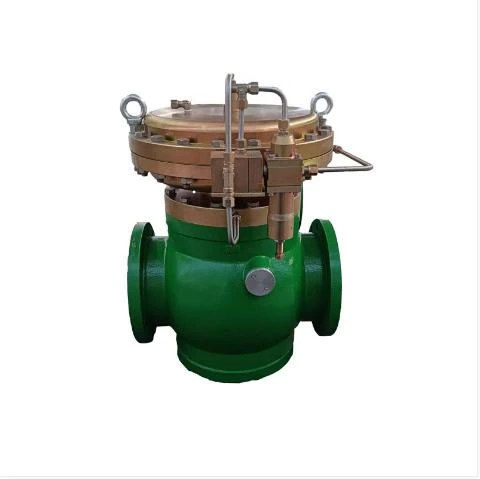
Dec . 16, 2024 05:10
Back to list
Gas Pressure Regulator Valve for Efficient System Control
The Function and Importance of Gas Pressure Regulators
In various industries and applications, gas pressure regulation plays a crucial role in ensuring optimal performance and safety. One of the key components involved in the regulation of gas pressure is the gas pressure regulator, known as صمام منظم ضغط الغاز in Arabic. This article delves into the function, types, applications, and importance of gas pressure regulators.
What is a Gas Pressure Regulator?
A gas pressure regulator is a mechanical device designed to control the pressure of a gas within a system. It reduces the input pressure from a gas source—such as a tank or pipeline—to a lower, more manageable output pressure. This regulation is essential in maintaining consistent pressure levels for various applications, ranging from residential heating systems to industrial processes.
How Do Gas Pressure Regulators Work?
Gas pressure regulators operate on a relatively simple principle. The device typically consists of a diaphragm that responds to changes in pressure. When gas enters the regulator, it exerts pressure on the diaphragm. If the inlet pressure is too high, the diaphragm will move to reduce the outlet flow, thereby decreasing the pressure. Conversely, if the inlet pressure drops, the diaphragm will allow more gas to flow through, maintaining a steady output pressure.
Most gas pressure regulators also come equipped with a relief valve. This feature prevents excessive pressure buildup that could potentially lead to system failure or explosion, highlighting the safety importance of these regulators in gas systems.
Types of Gas Pressure Regulators
There are various types of gas pressure regulators tailored to specific applications. Two primary categories include
1. Single-Stage Regulators These are designed to reduce pressure from a gas source to a desired output pressure in a single step. They are often used in applications with relatively constant inlet pressure.
2. Two-Stage Regulators Unlike their single-stage counterparts, two-stage regulators first reduce the inlet pressure to an intermediate level before reaching the desired output pressure. This type of regulator provides more precise control and is ideal for applications where the inlet pressure fluctuates significantly.
صمام منظم ضغط الغاز

Applications of Gas Pressure Regulators
Gas pressure regulators find applications in numerous fields, including
- Residential Heating and Appliances In homes, gas pressure regulators are essential for controlling the pressure of natural gas supplied to appliances like stoves, water heaters, and furnaces.
- Industrial Processes Many industrial operations require precise gas pressure regulation for processes such as welding, cutting, and manufacturing. Regulators ensure that equipment operates efficiently and safely.
- Medical Gas Systems In healthcare facilities, gas pressure regulators manage the flow of medical gases like oxygen, ensuring patients receive the correct dosage for treatment.
- Laboratories In scientific research, maintaining consistent gas pressures is crucial for experiments and equipment, making regulators indispensable in lab environments.
Importance of Gas Pressure Regulators
The importance of gas pressure regulators cannot be overstated. They ensure that gas is delivered at safe, stable, and usable pressures for various applications. This not only enhances the efficiency of gas-consuming equipment but also significantly reduces the risk of accidents, explosions, or leaks.
Moreover, regulators contribute to energy conservation. By maintaining optimal pressure levels, they help prevent wastage of gas, leading to lower operational costs and a reduced environmental footprint. In industries where gas is a significant operational cost, this efficiency can translate to substantial financial savings.
Conclusion
In conclusion, gas pressure regulators are invaluable components in the management of gas systems across various sectors. Their primary function of controlling gas pressure enhances safety, efficiency, and reliability in operations. As technology advances, the design and functionality of these devices continue to improve, further emphasizing their critical role in modern gas applications. Understanding the significance of gas pressure regulators is essential not only for industry professionals but also for anyone involved in the use of gas systems in their daily lives.
Next:
Latest news
-
Safety Valve Spring-Loaded Design Overpressure ProtectionNewsJul.25,2025
-
Precision Voltage Regulator AC5 Accuracy Grade PerformanceNewsJul.25,2025
-
Natural Gas Pressure Regulating Skid Industrial Pipeline ApplicationsNewsJul.25,2025
-
Natural Gas Filter Stainless Steel Mesh Element DesignNewsJul.25,2025
-
Gas Pressure Regulator Valve Direct-Acting Spring-Loaded DesignNewsJul.25,2025
-
Decompression Equipment Multi-Stage Heat Exchange System DesignNewsJul.25,2025

